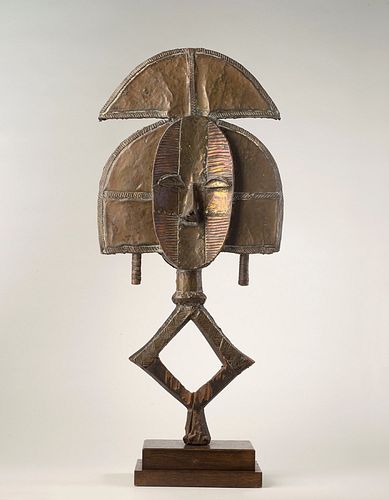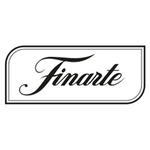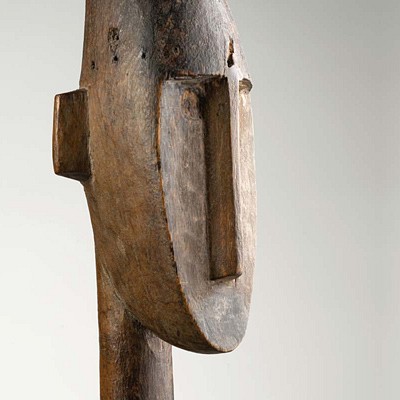Kota, regione meridionale del Gabon
About Seller
Via Sarpi 6
Milano
Italy
Finarte’s core business is the organization of public auctions of works of art and specialty items. Sellers, buyers and investors can rely on our experts for technical and financial advice on works of art, photography, design objects, jewelery, books, wines, vintage fashion and classic cars. In Marc...Read more
Two ways to bid:
- Leave a max absentee bid and the platform will bid on your behalf up to your maximum bid during the live auction.
- Bid live during the auction and your bids will be submitted real-time to the auctioneer.
Bid Increments
| Price | Bid Increment |
|---|---|
| EUR€0 | EUR€10 |
| EUR€200 | EUR€20 |
| EUR€400 | EUR€50 |
| EUR€1,000 | EUR€100 |
| EUR€2,000 | EUR€200 |
| EUR€5,000 | EUR€500 |
| EUR€10,000 | EUR€1,000 |
| EUR€50,000 | EUR€5,000 |
| EUR€100,000 | EUR€10,000 |
| EUR€200,000 | EUR€20,000 |
About Auction
Oct 14, 2020
MILAN Via Paolo Sarpi, 6 (get direction) SESSION (lots 1-77) Wednesday 14 October 2020 5:30 p.m. Finarte info@finarte.it
- Lot Description
Hardwood covered with copper foils. Inagaki base*
H 71 cm
Two-faced reliquary figure. The style of this work reflects Kota reliquaries, made by groups settled in southern Gabon, in Franceville, Haut-Ogooué. The main features of these statues were identified by the French ethnologist and anthropologist Louis Perrois, classified with dominant criteria that we summarize here: Concave side: - oval face and hairstyle adorned with a crest in the shape of a half-moon; - curved locks on both sides of the head with straight base; - horizontal plates (here they are decorated); - vertical cylindrical pendants; - eyes (in the shape of a half-moon); - realistic nose (dihedral angle); - ring emphasised at the base of the neck; - rhomboid wood (with square section); - no mouth; Convex side: - bulging head with arched eyebrows; This is a Kota reliquary of the Janus type, so has with two opposing figures that share a rhomboid structure in the lower part. It is a rare model for Kota statues. Both sides are covered with copper plates. The concave side has the shape of a long oval with large brass strips on the middle axis. The nose, a dihedral angle, is in the centre. The whole contour of the statue is embellished with decorations. The face is covered with copper plates with decorated strips. The pendants are covered with thin copper spirals.The convex side is composed by a bulging forehead, divided by the sagittal line, and the arching of the eyebrows, from the root of the nose, evoke the shape of the eyes.It is rare that the statue does not have a mouth. The metal parts were fixed with copper nails and iron components along the sides.There are fractures and scrapings on both the metal and wooden parts of the structure, further proof that the statue was undoubtedly made a long time ago.
EXHIBITIONS
- Berna 1980, Musée des Beaux Arts; - Lugano 2002, Palazzo Riva, Banca Svizzera Italiana (BSI);
LITERATURE
Reproduced in: - MORIGI PAOLO “Raccolta di un amatore d’arte primitiva”, Magliaso, Lugano & Kunstmuseum Bern, Switzerland 1980, fig. 246, page 270 and 271; - VENTURI LUCA M. “Anime antiche, arte negra, da una raccolta di sculture dell’Africa occidentale” BSI Bank, Lugano 2002, fig. 39; - CHAFFIN ALAIN “L’Art Kota” article published in “Arts d’Afrique Noire” Arnouville num. 5, Spring 1973, pages 12 - 43; - PERROIS LOUIS “Arts du Gabon” Arnouville 1979, page 309; - PERROIS LOUIS “Patrimoines du Sud, collections du Nord” - Trente ans de recherche à propos de la sculpture africaine (Gabon, Cameroun) ORSTOM, Paris 1997; - PERROIS LOUIS “Art ancestral du Gabon dans les collections du Musée Barbier-Mueller” Geneva 1985, page 51; - VARIOUS AUTHORS “Les forets natales: Arts d’Afrique équatoriale atlantique” Musée du Quai Branly, Paris 2017;
(*) Kichizò Inagakì (1876 -1951). Of Japanese origins, he lived in Paris between 1920 and 1940, where he gained success with his fine wood sculptures during the Belle Époque. He became known in the world of primitive art collectors and dealers creating wooden bases for the African works that dealers entrusted him with. After becoming famous for such creations, he created his own stamp, with his signature on it, which he impressed on the wooden bases he created. Documents from “Tribal Art” magazine, num. 66, Brussels, Hiver 2012, Article by Charles-Wesley Hourdé, pages 96-105; The Kota reliquary was composed by a wicker basket where to collect the cleaned and polished remains of the family ancestors. The sculpture, covered with cooper, was placed on the top of the basket with other similar statues, each representing the faces of the founding members of the clan. For Fang, Kota, Mahongwe, Shamaye, etc. tribes, the worship of the ancestors (Bwete) was vital for the religious and social life of the group and was based on the respect towards the most prominent ancestors, who were believed to have the power to positively or negatively affect the life of their descendants from the afterworld. After the death of an eminent person, the spiritual healer (Nganga) took some of the remains of the body and later polished and decorated them with metal parts to better store them inside the wicker basket. The reliquaries symbolizing the dead ancestors were placed on the cover. They were used to protect the baskets against possible violators. The reliquaries where places in dedicated worship place at the side of the village and where controlled by the members of the dead’s family. The metal covering, present only on the front part, was used to protect the statue against xylophage insects.Bwete cult and Kota reliquaries almost disappeared in the first half of the nineteenth century due to the arrival of catholic missionaries, who wanted to impose their religion on local people. Even though many works were destroyed, the indigenous tradition, especially in the most inaccessible parts of the rainforest, continued even after the independence (1958). Today, such reliquaries, typical of central Africa, still show how African sculptors were able to turn the human body into an abstract figure. - Shipping Info
-
Upon written request of the Buyer, Finarte may arrange the packaging and shipment of the lot, on condition that the Buyer: (a) has fully paid the Total amount due; (b) provides Finarte with any certificate of free circulation or export licence or any statement and/or certification required for such purpose. Unless otherwise agreed with the Buyer: (a) packaging and shipment expenses shall be for the account of the Buyer, who may request, at least twenty-four (24) hours before the beginning of the auction, estimates of costs should the Buyer decide to entrust Finarte with the packaging and shipping of the lot; (b) the insurance coverage concerning any risk for (even partial) loss and/or damage caused to the lot during transport must be agreed between the Buyer and the carrier without any liability for Finarte; (c) the cost of insurance shall be for the account of the Buyer. The shipment and packaging of the lot to the Buyer shall be entirely at the risk and expenses of the Buyer and Finarte shall in no event be held liable for any action or omission of packaging workers or carriers.
-
- Buyer's Premium



 EUR
EUR CAD
CAD AUD
AUD GBP
GBP MXN
MXN HKD
HKD CNY
CNY MYR
MYR SEK
SEK SGD
SGD CHF
CHF THB
THB












